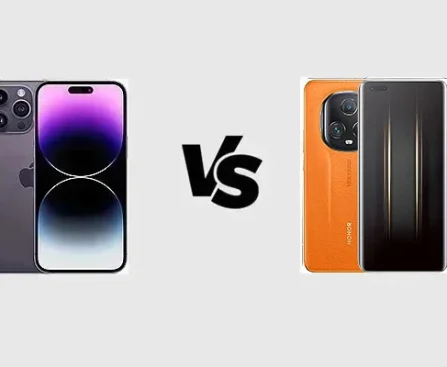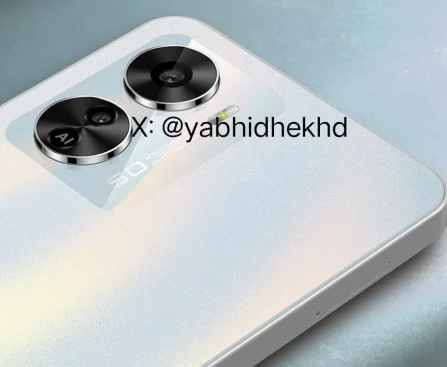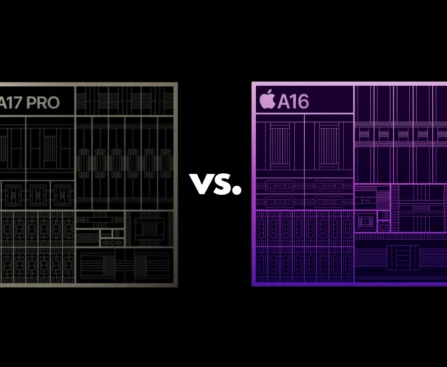It’s been many months since the Xiaomi 13 series debuted and there is still some time before the Xiaomi 14 smartphones are unveiled. However, it’s about time for the company’s premium mid-range Xiaomi 13T series. This new lineup includes the Xiaomi 13T and Xiaomi 13T Pro, both of which are confirmed to launch on September 25th in an event taking place in Berlin. Both models will bring solid specifications for the price but the Pro model is destined to be particularly enticing. And it also happens to be the focus of this roundup. We already gathered all the details of the standard Xiaomi 13T in a previous post. Design and Display Xiaomi is bringing notable design changes to the Xiaomi 13T Pro. Based on leaked images, the back of the smartphone is expected to be made of glass or leather, with a square camera module in the top left corner. The smartphone looks more refined and more premium as compared to the Xiaomi 12T Pro. But looks can be subjective so we’ll leave that decision to you. The Xiaomi 13T Pro is said to arrive in Black and Blue, with the first color being under a glass panel while the second being part of a vegan leather design. The smartphone closely resembles the design of the Redmi K60 Ultra. In fact, rumors suggest that it is the same phone with a different name. Since the K60 Ultra is limited to China, it’s fortunate that we are getting it in the global market in some form. Anyways, the Xiaomi 13T Pro gets a flat display on the front with a punch-hole selfie camera cutout in the top center. The screen is expected to be the 6.67” OLED with a 144 Hz refresh rate and 1220p resolution. For comparison, the Xiaomi 12T Pro debuted with the same 6.67” display, featuring a lower 120Hz refresh rate. Other Specifications The Xiaomi 13T Pro is expected to come with some notable hardware under the hood. For starters, the handset could be powered by the Dimensity 9200+ chip. This is a flagship SoC from MediaTek based on TSMC’s NP4 node. It brings one fast Cortex-X3 core with up to 3.05 GHz, three A715 cores with up to 2.85 GHz, and four power-efficiency cores (Cortex-A510) clocked at up to 1.8 GHz. The handset is likely to be offered in a choice between 12GB or 16GB of RAM and diverse storage options, including 256GB, 512GB, or 1TB. Keeping the lights on will be a 5,000mAh battery, which is said to support 120W fast charging. We don’t expect to see wireless charging support on the Xiaomi 13T Pro. However, the handset is supposed to be IP68 dust/water resistant (up to 1.5m for 30 min). The Xiaomi 13T Pro’s camera will be Leica-branded and is expected to feature a 50MP main sensor with a Sony IMX707 sensor, a 50MP telephoto camera with up to 3x optical zoom, and a 13MP ultrawide-angle camera. The front-facing camera will remain at 20MP, the same as the Redmi K60 Ultra. In other words, the only changes to the camera system are on the back of the phone. Expected Pricing The Xiaomi 13T Pro’s price is likely to be similar to the last year’s model. The top-end Xiaomi 12T Pro, which offers 12GB of RAM and 256GB of storage, is currently listed in Europe for approximately 719 euros. Rumors are indicating that the Xiaomi 13T Pro will be priced at €900 for the 12GB + 512GB configuration option. We will undoubtedly learn all the details on the day of the launch. Stay tuned for updates.
In the landscape of technology, smartphones have become the linchpin of our digital existence. The relentless pursuit of innovation has brought forth two technological marvels: the iPhone 15 Pro Max and the Honor Magic5 Ultimate. This article provides an exhaustive comparison of these two innovative devices, exploring every facet to determine which one truly stands out. Apple iPhone 15 Pro Max vs Honor Magic5 Ultimate Apple iPhone 15 Pro Max Honor Magic5 Ultimate DIMENSIONS AND WEIGHT 159.9 x 76.7 x 8.3 mm,221 g 162.9 x 76.7 x 8.8 mm,217 g DISPLAY 6.7 inches, 1290 x 2796 pixels (Full HD+), Super Retina XDR OLED 6.81 inches, 1312 x 2848p (Full HD+), OLED PROCESSOR Apple A17 Pro hexa-core 3.78 GHz Qualcomm Snapdragon 8 Gen 2, octa-core 3.2 GHz MEMORY 8 GB RAM, 512 GB – 8 GB RAM, 256 GB – 8 GB RAM, 1 TB 16 GB RAM, 512 GB SOFTWARE iOS 17 Android 13, MagicOS CONNECTIVITY Wi-Fi 802.11 a/b/g/n/ac/ax, Bluetooth 5.3, GPS Wi-Fi 802.11 a/b/g/n/ac/6e, Bluetooth 5.2, GPS CAMERA Quad 48 + 12 + 12 MP + TOF 3D LiDAR scanner, f/1.8 + f/2.8 + f/2.2Dual 12 MP + SL 3D f/1.9 front camera Triple 50 + 50 + 50 MP + TOF 3D sensor, f/1.6 + f/3.0 + f/2.0Single 12 MP f/2.4 + TOF 3D sensor front camera BATTERY Fast charging 29W and wireless charging 15W 5450 mAh, Fast Charging 66W, Qi wireless charging 50W ADDITIONAL FEATURES 5G, optional dual SIM, optional eSIM, MagSafe 15W, IP68 waterproof 5G, dual SIM, reverse wireless charging, reverse charging, IP68 waterproof Design The iPhone 15 Pro Max is a manifestation of luxury and elegance, maintaining Apple’s tradition of premium design. The combination of a glass back and a stainless steel frame exudes sophistication, while the Dynamic Island, which houses the front camera and sensors, imparts a futuristic appeal to the device. Every element of the iPhone 15 Pro Max is meticulously crafted, reflecting Apple’s philosophy of simplicity and user-centric design. Conversely, the Honor Magic5 Ultimate is a harmonious blend of elegance and innovation, showcasing a sleek design complemented by a premium finish. The distinctive layout of the camera module and the subtle branding accentuate its aesthetic appeal, making it a visual delight. Display The iPhone 15 Pro Max is adorned with a 6.7-inch Super Retina XDR OLED display, delivering sharp visuals, vibrant colors, and deep blacks with a resolution of 1290 x 2796 pixels. The integration of Apple’s True Tone technology and a 120 Hz refresh rate guarantees color accuracy and a fluid user experience across various activities, such as gaming, browsing, or media consumption. The Honor Magic5 Ultimate, on the other hand, features a slightly larger 6.81-inch Full HD+ OLED display with a resolution of 1312 x 2848 pixels. The display promises a visual extravaganza with sharp, vibrant, and detailed imagery, ensuring a delightful viewing experience regardless of the content. Specs & Software The iPhone 15 Pro Max is powered by the formidable Apple A17 Pro hexa-core processor, clocked at 3.78 GHz, coupled with up to 8 GB of RAM. This powerhouse guarantees impeccable performance across all tasks and activities. It operates on iOS 17, offering a myriad of features and optimizations, ensuring a seamless and intuitive user experience. In contrast, the Honor Magic5 Ultimate is equipped with the Qualcomm Snapdragon 8 Gen 2 octa-core processor, clocked at 3.2 GHz, and bolstered by 16 GB of RAM. This configuration promises a smooth, lag-free, and robust performance. It runs on Android 13 with MagicOS, providing a feature-rich and smooth user experience with extensive customization options. Apple’s ecosystem is renowned for its seamless integration and user-friendly interface, making it a preferred choice for users who prioritize simplicity and efficiency. The iPhone 15 Pro Max, with its advanced features and optimizations, offers a user experience that is both intuitive and enjoyable. The Honor Magic5 Ultimate, with its Android-based MagicOS, offers extensive customization and flexibility, allowing users to tailor their experience according to their preferences. The extensive feature set and user-friendly interface make it a strong contender for users who value personalization and versatility. Camera The iPhone 15 Pro Max boasts a quad-camera setup, including a 48 MP primary sensor, capable of capturing stunning and detailed photos in diverse lighting conditions. The dual 12 MP front cameras with 3D facial recognition are optimized for selfies and video calls, ensuring detailed and clear imagery. The Honor Magic5 Ultimate, with its triple 50 MP camera setup and TOF 3D sensor, guarantees vibrant and sharp photos, making every shot a masterpiece. The 12 MP front camera, coupled with a TOF 3D sensor, is ideal for selfies and video calls, ensuring detailed and clear imagery. Battery The iPhone 15 Pro Max offers impressive battery life with fast charging at 29W and wireless charging at 15W, ensuring users can get through a day with moderate usage. It also features 5G connectivity, optional dual SIM, optional eSIM, MagSafe 15W, and IP68 waterproof rating. The Honor Magic5 Ultimate comes with a 5450 mAh battery, 66W fast charging, and 50W Qi wireless charging, promising extended usage and convenience. It also offers 5G connectivity, dual SIM, reverse wireless charging, reverse charging, and an IP68 waterproof rating. Price The choice between the iPhone 15 Pro Max (starting from $1200 or €1700) and the Honor Magic5 Ultimate (starting from €900 or $800) ultimately boils down to individual preferences, brand loyalty, and value perception. Both devices, with their cutting-edge specifications, elegant design, and unparalleled performance, offer a premium user experience. For users deeply integrated into the Apple ecosystem, the iPhone 15 Pro Max is the logical choice, offering seamless connectivity and a unified experience across Apple devices. However, for users seeking high performance, extensive features, and value for money, the Honor Magic5 Ultimate stands out as a compelling option. Apple iPhone 15 Pro Max vs Honor Magic5 Ultimate: PRO and CONS Honor Magic5 Ultimate PRO CONS Apple iPhone 15 Pro Max PRO CONS
Samsung has unveiled two new military-specific smartphones: the Galaxy S23 Tactical Edition and the Galaxy XCover 6 Pro Tactical Edition. These phones are built for durability in extreme conditions and follow the successful Galaxy S20 Tactical Edition. Notably, they won’t be available to the general public but are designed to support military personnel in various assignments and environments. The Galaxy XCover 6 Pro Tactical Edition has earned MIL-STD-810H certification, proving its resilience against extreme weather conditions and its ability to withstand submersion in up to 5 feet of water for 30 minutes. In contrast, the Galaxy S23 Tactical Edition boasts an impressive IP68 rating and is encased in a rugged military-grade housing suitable for chest or forearm mounting. Both phones include a night vision mode and glove-friendly auto-touch sensitivity. They support external GPS, drone feeds, and laser range finders for improved mission efficiency. Communication capabilities encompass tactical radio and mission device protocols, as well as standard cellular connectivity like LTE, CBRS, Bluetooth, and Wi-Fi. Stealth Mode disables LTE and e-911, ensuring secure, off-grid communication. Samsung Knox provides hardware-level encryption, and Dual Data at Rest (DualDAR) offers added security. Serverless license activation allows versatile deployment. Running Android 13-based One UI 5.1, both phones come with the Android Team Awareness Kit (ATAK) for situational awareness and the Battlefield Assisted Trauma Distributed Observation Kit (BATDOK) for real-time patient encounter information. Support for Samsung DeX and dual VPN chaining enhances security. The cost of these smartphones remains undisclosed as they are exclusively intended for military operators and not accessible to the general consumer market.
Ever since September started, we have been witnessing a plethora of smartphone launches. After days of continuous new phone releases, the forthcoming few days will be calm after a long while. That’s because only two brands have scheduled events. One of them is Xiaomi and the other one is Lava. Xiaomi’s event will take place in Germany where it will unveil its T series flagship phones. On the other hand, Lava will be debuting its yet another budget 5G smartphone in India. Let’s check out these devices one by one. Upcoming Smartphones Next Week PrevNext 1. Lava Blaze Pro 5G The Lava Blaze Pro 5G is scheduled to launch in India on September 26 (Tuesday). It is expected to be announced via a livestream at 12 PM IST. Based on leaks, the device will sport a centered punch-hole display, unlike the standard Blaze 5G which has a dewdrop notch. It is rumored to be powered by a MediaTek Dimensity 6020 chipset, Unfortunately, nothing else is known about this product, except that it will have a 50MP rear camera and is expected to be priced under ₹15,000 (~$180).
Xiaomi held an event in China today where it unveiled the next-generation Redmi Note series, a new tablet, TWS earphones, and more. The Redmi Note 13 lineup comprises standard, pro, and pro+ variants. All three offerings arrive as the successors to the last year’s Redmi Note 12 series. The Note 13 Pro+ is the top-end model in the series arriving with significant upgrades compared to its predecessor. It also packs many firsts features in the display department in the company’s Note lineup. Read on to learn more about both below. Redmi Note 13 Pro+ specifications and features The Redmi Note 13 Pro+ is the first in the sub-brand’s Note lineup to feature a curved AMOLED display measuring 6.67 inches with a centre-aligned punch-hole cutout and bearing a 1.5K resolution. It has a 120Hz refresh rate and 1,800 nits peak brightness. The device also supports HDR10 and Dolby Vision. The smartphone is again the first in the Note family to be equipped with a fingerprint scanner. In terms of design, the Redmi Note 13 Pro+ ditches the camera island in favor of traditionally placed sensors. However, the rear panel has a faux leather texture with a dual-tone design. It is also IP68-certified dust and water-resistant. On the imaging front, the Redmi Note 13 Pro+ is equipped with a 200MP Samsung ISOCELL HP3 1/1.4-inch sensor. There is an 8MP ultra-wide-angle lens and a 2MP third shooter. The device supports OIS and EIS. It has the ability to shoot up to three different focal lengths with an in-sensor zoom and 4x optical lossless zoom. Up front, the smartphone has a 16MP selfie snapper. Under the hood, the Redmi Note 13 Pro+ houses the MediaTek Dimensity 7200 Ultra processor. The phone packs up to 16GB RAM and 512GB storage. The smartphone is backed by a 5,000 mAh battery unit with support for 120W fast charging. Software-wise, it runs on MIUI 14 based on Android 13 out of the box. Connectivity options on the device include USB-C port, a 3.5mm headphone jack, IR Blaster, 5G, WiFi 6, Bluetooth 5.3, NFC, and more. Redmi Note 13 Pro+ pricing The Redmi Note 13 Pro+ starts at CNY 1,999 ($273) for the 12GB + 256GB option. The 12GB + 512GB and 16GB + 512GB configurations are priced at CNY 2,199 ($300) and CNY 2,299 ($314) respectively. The smartphone will go on sale starting September 26
The classic Mini, originally designed as an affordable car for the British public, has gone electric—but not without losing sight of its budget-friendly roots. David Brown Automotive, known for luxury restorations, has launched an all-electric version named the Mini eMastered. The car might be a classic, but the cost definitely forces people to raise their eyebrows Equipped with a 72-kilowatt electric motor and an 18.8-kilowatt-hour battery, this revamped Mini can go up to 110 miles on a single charge. It accelerates from 0 to 62 mph in 8.5 seconds and has a top speed of 92 mph. Despite the modern amenities, such as Android Auto and Apple CarPlay, what really catches the eye is the sticker price. It is priced at a whopping $154,500 (£125,000), excluding all the extra charges and taxes. That’s a far cry from its origins as a budget-friendly vehicle. The Mini eMastered is handcrafted and customized per the owner’s specs, but at that price, it’s clear this car isn’t for everyone. This luxury revamp is definitely deviating from the Mini’s original mission to provide economical personal transport. The Mini eMastered does stay true to its classic design, down to its weight of 1,411 pounds, equal to the original gas model. However, its premium pricing clearly marks it as a luxury item, rather than a car for the average driver.
Samsung is reportedly working on the A15 smartphone. It is expected to arrive as the successor to the Galaxy A14. Now, the upcoming offering has appeared in high-quality leaked renders showing its design from all angles. The key specifications of the device have also been revealed. The information has been shared by reliable tipster Steve Hemmerstoffer aka Onleaks. Read on to learn what we know about the smartphone. Samsung Galaxy A15 leaked renders As per the leaked renders, the Samsung Galaxy A15 sports a boxy form factor. The power and volume rocker buttons are located on the right side with the former doubling up as a fingerprint scanner. Notably the right frame of the device also has a bump. The back panel has vertically stacked three camera sensors without any camera module. The design resembles the previous Galaxy S flagships. On the front, the Samsung Galaxy A15 has a notch also known as Infinity-U display. The screen is said to measure 6.4 inches and there is a slightly thicker bottom chin. The bottom part of the phone houses a USB-C port, a 3.5mm headphone jack, and a speaker grille. In terms of dimensions, the Samsung Galaxy A15 is said to measure 160.2 x 76.8 x 8.4 mm. With the frame bump, the width will expand from 76.8 mm to 77.4 mm. The core specifications of the Samsung Galaxy A15 remain under wraps for now. We can expect more details to surface in the coming days. Samsung is reportedly working on the A15 smartphone. It is expected to arrive as the successor to the Galaxy A14. Now, the upcoming offering has appeared in high-quality leaked renders showing its design from all angles. The key specifications of the device have also been revealed. The information has been shared by reliable tipster Steve Hemmerstoffer aka Onleaks. Read on to learn what we know about the smartphone.
Samsung seems ready to launch its third fan edition smartphone— the Galaxy S23 FE. The handset has been leaking a lot recently and we have also seen its marketing material. Most specifications of the S23 FE have already been revealed through leaks. However, Samsung is still keeping quite about the handset’s launch. While we wait, the Galaxy S23 FE has been spotted on Google Play Console with Snapdragon and Exynos chips. The listing also reveals key specifications of the device. The Galaxy S23 FE is reportedly coming in two flavors— one with a Snapdragon 8 Gen 1 chip and the other with Samsung’s own Exynos 2200 SoC. Google Play Console now confirms these reports, listing the S23 FE in Samsung r11q and Samsung r11s variants. The r11q model is powered by the Snapdragon 8 Gen 1 SoC with Adreno 730 GPU, while the r11s model has the Exynos 2200 chipset. Other than the CPU and GPU, all the other specs are the same for both variants. The listing also reveals the Galaxy S23 FE will come with at least 8GB of RAM and run Android 13 on the software front. We also see the renders of the smartphone, which match recent leaks. As per previous reports, the handset sports a 6.3-inch AMOLED display and a 10MP selfie shooter on the front, while the rear features a 50MP triple camera setup. A 4,500mAh battery pack should power this device which will support 25W charging. Apart from Google Play Console, the Galaxy S23 FE has also surfaced on other certification platforms like NBTC, TDRA, Bluetooth SIG, BIS, and more.
The Redmi Note series is one of the most popular smartphone lineups worldwide. Earlier this month, the next-gen Redmi Notes were confirmed to debut soon. A few days back, the brand revealed that the launch is happening this week. Apart from disclosing the launch date, Redmi has also been teasing the features of its upcoming phones. Other than official teasers, we have been learning about these devices from other sources, such as leaks and certifications. Here in this article, we have compiled everything that’s known about the forthcoming Redmi Note 13 series in one place. Let’s go through the details. Redmi Note 13 Series Launch Date The Redmi Note 13 series is scheduled to launch in China on September 21. It will be announced at a conference that will begin at 7 PM GMT+8. Officially, Redmi has confirmed three devices, namely Redmi Note 13 Pro, Redmi Note 13 Pro Plus, and Redmi Note 13 Yibo Edition. However, we are expecting the vanilla Redmi Note 13 as well, even though the information regarding it is bleak. Either way, if you are interested in watching the event, it will be live-streamed on Weibo and other leading Chinese video streaming platforms. Redmi Note 13 Series Design The Redmi Note 13 series will arrive with a different design compared to the Redmi Note 12 lineup. The new design will not be totally different as the similarity between the previous-gen design will be there. The Redmi Note 13 Pro will retain the glass sandwich build with a flat frame. However, the camera island will be inspired by the Xiaomi 13 series but with protruding modules. On the other hand, the camera placement on the Redmi Note 13 Pro Plus will be similar to the Redmi Note 12 Turbo. But it will have a curved display and a faux leather back. The Redmi Note 13 Yibo will likely be based on it with some variations in terms of color and pattern. Unfortunately, we have no details on the design of the Redmi Note 13. Redmi Note 13 Series Specifications The Redmi Note 13 Pro and the Redmi Note 13 Pro Plus will flaunt 1.5K OLED displays. This makes them the first Redmi Notes to sport a screen with more than FHD+ resolution. Also, they will be the first Redmi Notes to come with an in-screen fingerprint sensor. Additionally, the Redmi Note 13 Pro Plus will be the first Redmi Note to feature a curved display. Its screen will offer 1800 nits peak brightness level,1920Hz PWM dimming, and DC dimming. In other words, these handsets will arrive with multiple firsts in the display department. Further, Redmi has officially confirmed the chips powering these phones. The MediaTek Dimensity 7200 Ultra and Qualcomm Snapdragon 7s Gen 2 will be present inside the Redmi Note 13 Pro Plus and Redmi Note 13 Pro, respectively. Both Pro models will sport a custom version of the 200MP Samsung ISOCELL HP3 Discovery Edition sensor. However, for some reason, only the Pro Plus version will have OIS (Optical Image Stabilization). As for energy, the Redmi Note 13 Pro will be backed by a 5,000mAh battery with support for 67W charging. While the Redmi Note 13 Pro Plus will house a 5,120mAh battery with 120W charging support. Since the Redmi Note 13 Yibo is expected to be based on the Redmi Note 13 Pro Plus, it will have the same specs as the latter. Whereas, we don’t have any info on the Redmi Note 13. Redmi Note 13 Series Expected Price The Redmi Note 13 series may start around ¥1,200 (~$165) for the vanilla model. While the Pro and Pro Plus variants could begin at ¥1,700 (~$235) and ¥2,200 (~$300), respectively. These prices are based on the launch pricing of the Redmi Note 12 series from 2022. So they may not be accurate as the new-gen models will come with many upgrades. Since Xiaomi is known for disruptive pricing, especially in China we wouldn’t be surprised if the Redmi Note 13 series cost about the same as the Redmi Note 12 series or just a little more.
When Apple announces a new chipset, it’s often met with excitement around the world. This year, the spotlight was on the A17 Pro. But how does it fare against its predecessor, the A16 Bionic? Let’s break it down. A17 Pro vs A16 Bionic Chipset Comparison Manufacturing Process A17 Pro: The standout feature of the A17 Pro is the industry’s first 3-nanometer chip built on TSMC’s latest 3nm fabrication process. This nanometric reduction from its predecessor means the chip can fit more transistors in the same space, resulting in improved performance and energy efficiency. To be precise, the A17 Pro houses approximately 19 billion transistors. A16 Bionic: The A16 Bionic, which works on a 4nm process and has around 16 billion transistors, was quite impressive in its time. However, with its 3nm process, the A17 Pro represents a major step ahead. Raw Performance CPU Cores: Both chips feature a 6-core CPU. However, architectural enhancements in the A17 Pro deliver what Apple describes as “the fastest single-threaded performance in any smartphone.” Geekbench Insights: Benchmarks indicate a substantial performance boost for the A17 Pro. The single-core performance on Geekbench shows an improvement of around 16%, and the multi-core performance jumps by approximately 13% compared to the A16. AnTuTu Insights: The iPhone 15 Pro Max scored 1,641,883 points on AnTuTu. In the CPU test, it achieved 392,643 points, and in the GPU test, it scored 597,734 points. It excelled in the memory department with a score of 306,164, surpassing the iPhone 14 Pro Max’s score of 233,925. Graphical Prowess GPU: While the A16 Bionic houses a 5-core GPU, the A17 Pro ramps it up with a 6-core GPU. According to Apple, this enhancement results in up to a 20% performance boost. Real-World Impacts: This isn’t just a numbers game. The added core means better handling of high-res graphics, from gaming to professional graphic tasks. Moreover, the A17 Pro’s GPU includes hardware-based ray tracing, a significant improvement in rendering realistic lighting and shadow effects. To be precise, the A17 Pro chip offers four times faster ray tracing performance compared to the A16 Bionic. GFXBench Insights: In GPU benchmark results on GFXBench, it outperformed the A16 Bionic by significant margins. For example, in the Aztec Ruins High Tier Offscreen test, the iPhone 15 Pro Max with A17 Pro performed about 19% better than the iPhone 15 Plus with A16 Bionic. In the Manhattan 3.1 Offscreen test, the A17 Pro showed improvements of up to 31.5%, with 199.8 fps compared to the A16’s 151.9 fps. While not all comparisons reached the advertised 20% boost, the A17 Pro appears to deliver greater GPU performance improvements. AI and Neural Capabilities Neural Engine: Artificial Intelligence (AI) tasks play a crucial role in modern smartphones. While both chips incorporate a 16-core Neural Engine, the A17 Pro’s version is said to be twice as fast, performing up to 35 trillion operations per second. This leads to improved performance for AI tasks and better photo and video optimizations. Memory and Efficiency RAM: The A17 Pro boasts 8GB LPDDR5 RAM, outshining the A16’s 6GB. This additional memory will assist in multitasking, allowing smoother app transitions and better performance in memory-intensive tasks. Efficiency: The A17 Pro’s 3nm process improves energy efficiency, enabling tasks to be performed with less power consumption. This leads to longer battery life and reduced heat generation, ensuring the device remains cool during demanding operations. Improved ISP (Image Signal Processor) Photonic Engine: The A17 Pro features improvements in its Image Signal Processor, including the new Photonic Engine and Smart HDR 5, resulting in improved photo and video quality compared to the A16 Bionic. Mesh Shading: It also introduces Mesh shading and offers video capabilities such as 2.8K @ 60 fps in Cinematic and Action Modes, surpassing the A16’s 30 fps limit. Additionally, the A17 Pro captures 48MP HEIF images in addition to 48MP Pro RAW images. Connectivity and Additional Features USB 3 Performance: The A17 Pro brings USB 3 capabilities to iPhones, allowing for faster data transfer rates of up to 10 Gbps, a significant step up from the 480 Mbps seen in the A16 Bionic. Media Engines: The A17 Pro also stands out with the addition of an AV1 decoder, expected to improve video streaming on newer iPhones. The A17 Pro builds upon the A16 Bionic’s foundation with a range of refinements and enhancements, solidifying its position as a formidable contender in the mobile chipset industry. The importance of these enhancements may vary from user to user, but for those seeking top-tier performance, the A17 Pro establishes a new standard in the continually evolving realm of smartphone technology.










